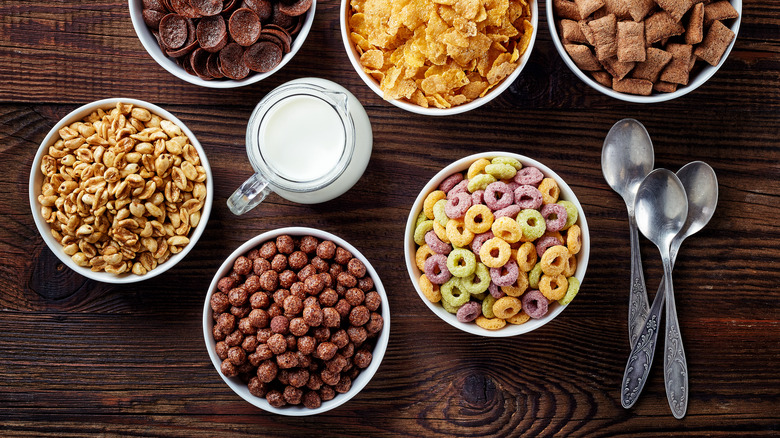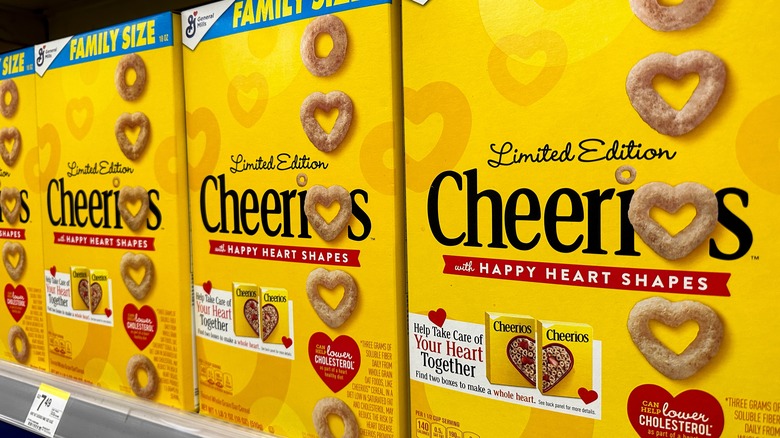America's Bestselling Cereal Was Probably Your Childhood Favorite
America has a deep connection to its convenience foods, and the nostalgia of our bestselling breakfast cereals clearly carries through from childhood to adulthood. Breakfast cereals were in fact a U.S. creation, and when it comes to sales, Cheerios are king. According to Zippia, the oat rings are the top brand by both volume and total sales, with Honey Nut Cheerios coming in at number two in total sales and third in volume. Another childhood favorite, Kellogg's Frosted Flakes, is the only one that comes close at number two in volume, while the top five selling cereals are rounded out by Honey Bunches of Oats and Cinnamon Toast Crunch.
Cereal was originally pioneered by health food evangelists like James Caleb Jackson and John Harvey Kellogg, but their style of hard, flavorless granola isn't what went on to win American hearts and minds. Instead, it was the addition of sugar, and the development of products like Corn Flakes and Rice Crispies that rocketed cereal into the morning mainstream and turned it into the comfort food so many of us love today. Those initial offerings evolved into an array of options targeted at kids and adults, with promises of easy meals and, more dubiously, claims that cereals were nutritious. But while innovation may always be ongoing, the country's favorites have tended to stay the same for years, and our bestselling cereal is likely what you poured out for yourself before school years ago.
Cheerios are the biggest name in American cereal
Cheerios aren't as old as some brands like Corn Flakes or Wheaties, but they've been a favorite for as long as most people can remember. They were first introduced in 1941 as "Cheerioats" after an employee at General Mills named Lester Borchardt and his team invented the process of extruding and shaping the O's. The brand was marketed as the first pre-cooked oat cereal in the U.S. before a legal dispute forced the name change to Cheerios in 1945. From the beginning, Cheerios has emphasized the healthy aspects of the oat-based cereal, even if the FDA has sometimes criticized General Mills' claims. The success of Honey Nut Cheerios, first introduced in 1979, has also inspired a big part of the company's strategy to stay on top, and there are now more than 10 types of Cheerios available.
Is there anything that could change Cheerios' dominance? Maybe price increases. Generic brands have gained ground on name-brand cereals since the pandemic-era inflation pushed up the cost of groceries, but General Mills still dominates the category, and Cheerios is still its top flagship brand. Cereal has also been in decline overall as customers move away from sugar and carb heavy breakfast options, but its still a major force in American breakfast. As long as that remains the case, there's a good chance our kids will be eating Cheerios just like we did.

